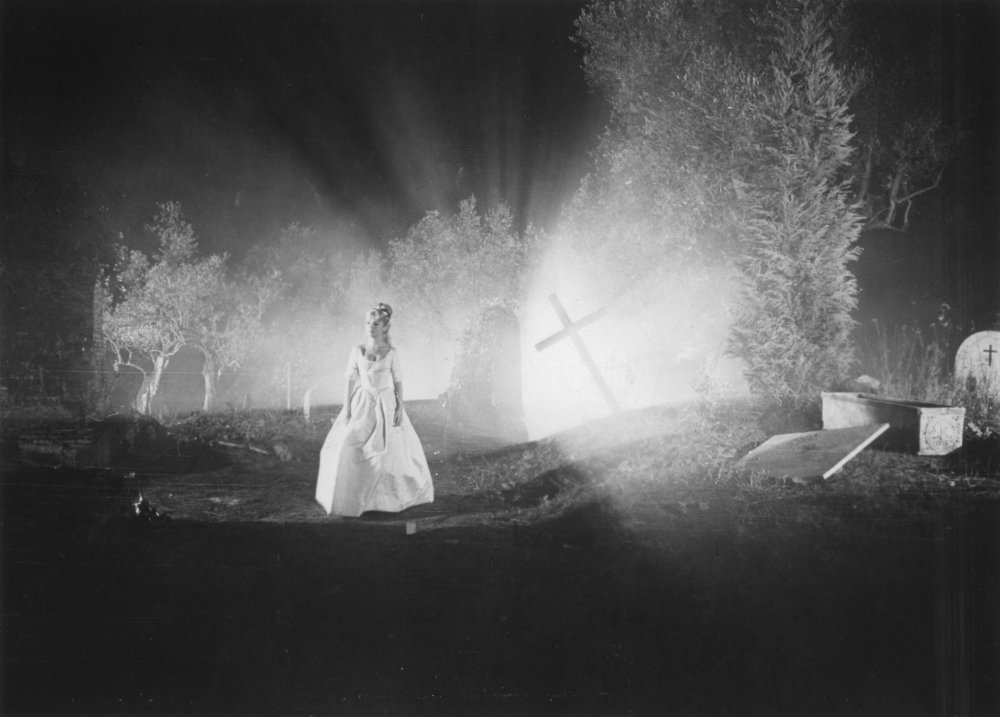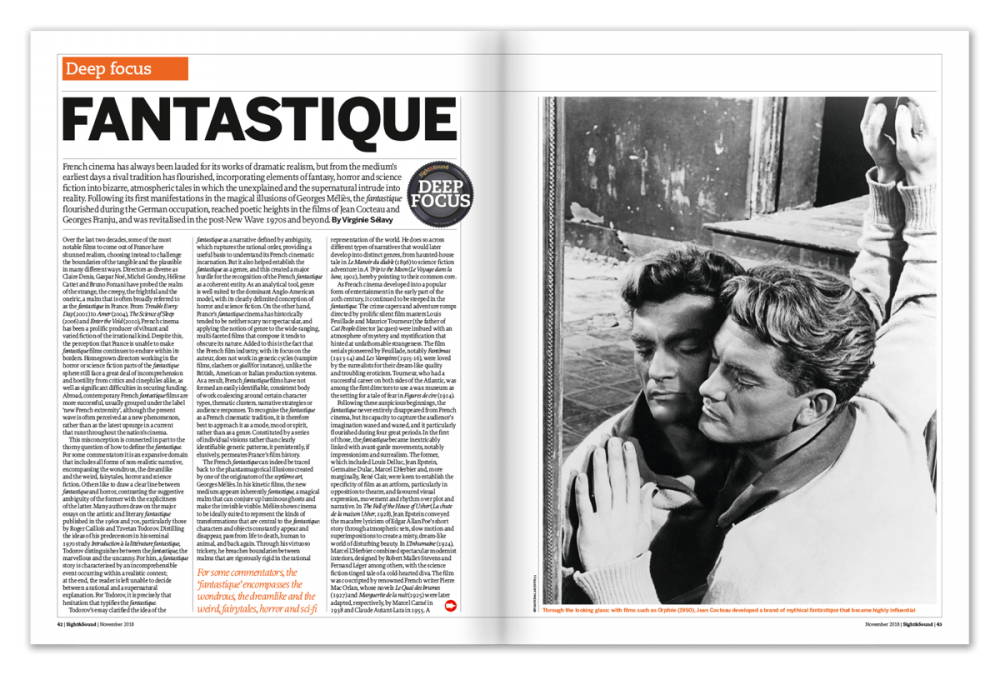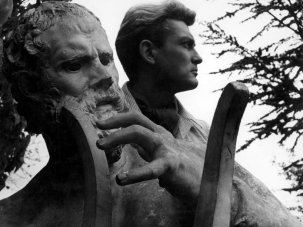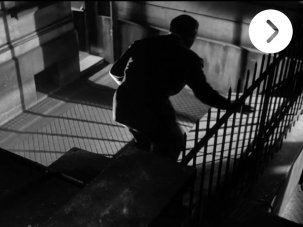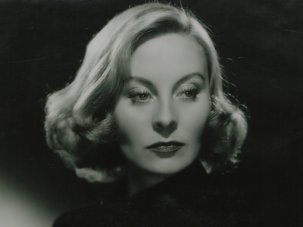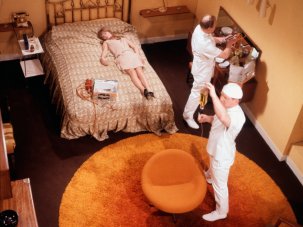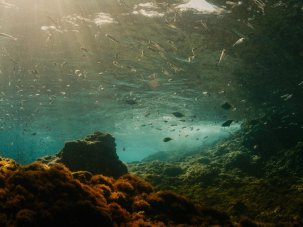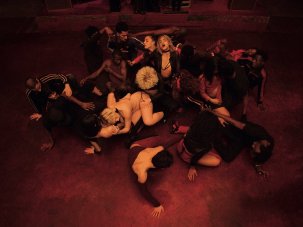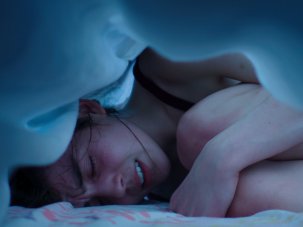Over the last two decades, some of the most notable films to come out of France have shunned realism, choosing instead to challenge the boundaries of the tangible and the plausible in many different ways. Directors as diverse as Claire Denis, Gaspar Noé, Michel Gondry, Hélène Cattet and Bruno Forzani have probed the realm of the strange, the creepy, the frightful and the oneiric, a realm that is often broadly referred to as the fantastique in France. From Trouble Every Day (2001) to Amer (2004), The Science of Sleep (2006) and Enter the Void (2010), French cinema has been a prolific producer of vibrant and varied fiction of the irrational kind.

The Sight & Sound Deep Focus season Fantastique: The Dream Worlds of French Cinema runs from 23 October to 28 November at BFI Southbank, London, with a talk by Virginie Sélavy on 25 October.
A BFI restoration of Orphée is rereleased in selected cinemas nationwide on 19 October.
A Jean Cocteau season runs at London’s Ciné Lumière from 22-30 November.
A selection of fantastique titles are also available on BFI Player.
Despite this, the perception that France is unable to make fantastique films continues to endure within its borders. Homegrown directors working in the horror or science fiction parts of the fantastique sphere still face a great deal of incomprehension and hostility from critics and cinephiles alike, as well as significant difficulties in securing funding. Abroad, contemporary French fantastique films are more successful, usually grouped under the label ‘new French extremity’, although the present wave is often perceived as a new phenomenon, rather than as the latest upsurge in a current that runs throughout the nation’s cinema.
This misconception is connected in part to the thorny question of how to define the fantastique. For some commentators it is an expansive domain that includes all forms of non-realistic narrative, encompassing the wondrous, the dreamlike and the weird, fairytales, horror and science fiction. Others like to draw a clear line between fantastique and horror, contrasting the suggestive ambiguity of the former with the explicitness of the latter.
Many authors draw on the major essays on the artistic and literary fantastique published in the 1960s and 70s, particularly those by Roger Caillois and Tzvetan Todorov. Distilling the ideas of his predecessors in his seminal 1970 study Introduction à la littérature fantastique, Todorov distinguishes between the fantastique, the marvellous and the uncanny. For him, a fantastique story is characterised by an incomprehensible event occurring within a realistic context; at the end, the reader is left unable to decide between a rational and a supernatural explanation. For Todorov, it is precisely that hesitation that typifies the fantastique.
Todorov’s essay clarified the idea of the fantastique as a narrative defined by ambiguity, which ruptures the rational order, providing a useful basis to understand its French cinematic incarnation. But it also helped establish the fantastique as a genre, and this created a major hurdle for the recognition of the French fantastique as a coherent entity. As an analytical tool, genre is well suited to the dominant Anglo-American model, with its clearly delimited conception of horror and science fiction. On the other hand, France’s fantastique cinema has historically tended to be neither scary nor spectacular, and applying the notion of genre to the wide-ranging, multi-faceted films that compose it tends to obscure its nature. Added to this is the fact that the French film industry, with its focus on the auteur, does not work in generic cycles (vampire films, slashers or gialli for instance), unlike the British, American or Italian production systems.
As a result, French fantastique films have not formed an easily identifiable, consistent body of work coalescing around certain character types, thematic clusters, narrative strategies or audience responses. To recognise the fantastique as a French cinematic tradition, it is therefore best to approach it as a mode, mood or spirit, rather than as a genre. Constituted by a series of individual visions rather than clearly identifiable generic patterns, it persistently, if elusively, permeates France’s film history.
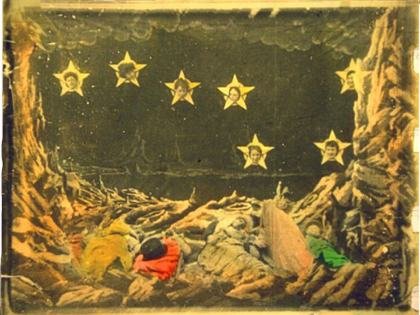
Georges Méliès’s restored Journey to the Moon (1902)
The French fantastique can indeed be traced back to the phantasmagorical illusions created by one of the originators of the septième art, Georges Méliès. In his kinetic films, the new medium appears inherently fantastique, a magical realm that can conjure up luminous ghosts and make the invisible visible. Méliès shows cinema to be ideally suited to represent the kinds of transformations that are central to the fantastique: characters and objects constantly appear and disappear, pass from life to death, human to animal, and back again. Through his virtuoso trickery, he breaches boundaries between realms that are rigorously rigid in the rational representation of the world. He does so across different types of narratives that would later develop into distinct genres, from haunted-house tale in Le Manoir du diable (1896) to science fiction adventure in A Trip to the Moon (Le Voyage dans la lune, 1902), hereby pointing to their common core.
As French cinema developed into a popular form of entertainment in the early part of the 20th century, it continued to be steeped in the fantastique. The crime capers and adventure romps directed by prolific silent film masters Louis Feuillade and Maurice Tourneur (the father of Cat People director Jacques) were imbued with an atmosphere of mystery and mystification that hinted at unfathomable strangeness. The film serials pioneered by Feuillade, notably Fantômas (1913-14) and Les Vampires (1915-16), were loved by the surrealists for their dream-like quality and troubling eroticism. Tourneur, who had a successful career on both sides of the Atlantic, was among the first directors to use a wax museum as the setting for a tale of fear in Figures de cire (1914).
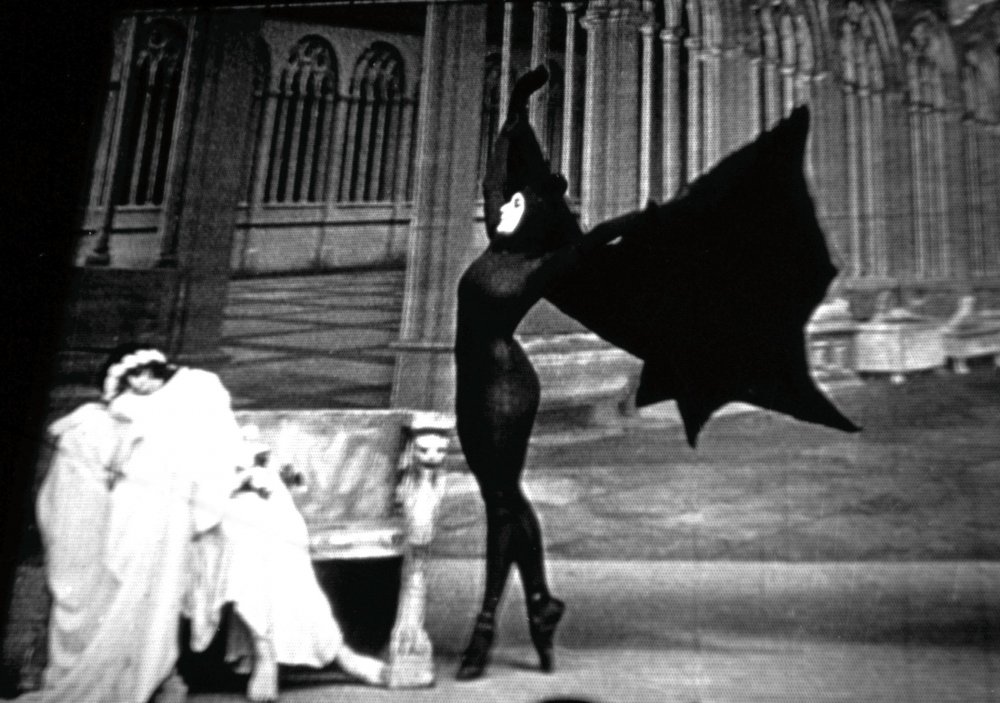
Les Vampires (1915)
Following these auspicious beginnings, the fantastique never entirely disappeared from French cinema, but its capacity to capture the audience’s imagination waxed and waned, and it particularly flourished during four great periods.
In the first of those, the fantastique became inextricably linked with avant-garde movements, notably impressionism and surrealism. The former, which included Louis Delluc, Jean Epstein, Germaine Dulac, Marcel L’Herbier and, more marginally, René Clair, were keen to establish the specificity of film as an artform, particularly in opposition to theatre, and favoured visual expression, movement and rhythm over plot and narrative. In The Fall of the House of Usher (La chute de la maison Usher, 1928), Epstein conveyed the macabre lyricism of Edgar Allan Poe’s short story through atmospheric sets, slow motion and superimpositions to create a misty, dream-like world of disturbing beauty.
In L’Inhumaine (1924), L’Herbier combined spectacular modernist interiors, designed by Robert Mallet-Stevens and Fernand Léger among others, with the science fiction-tinged tale of a cold-hearted diva. The film was co-scripted by renowned French writer Pierre Mac Orlan, whose novels Le Quai des brumes (1927) and Marguerite de la nuit (1925) were later adapted, respectively, by Marcel Carné in 1938 and Claude Autant-Lara in 1955. A central figure in the development of the fantastique tradition in France, both as a fiction writer and as a theorist, Mac Orlan wrote the first essay on fantastique cinema in 1926.
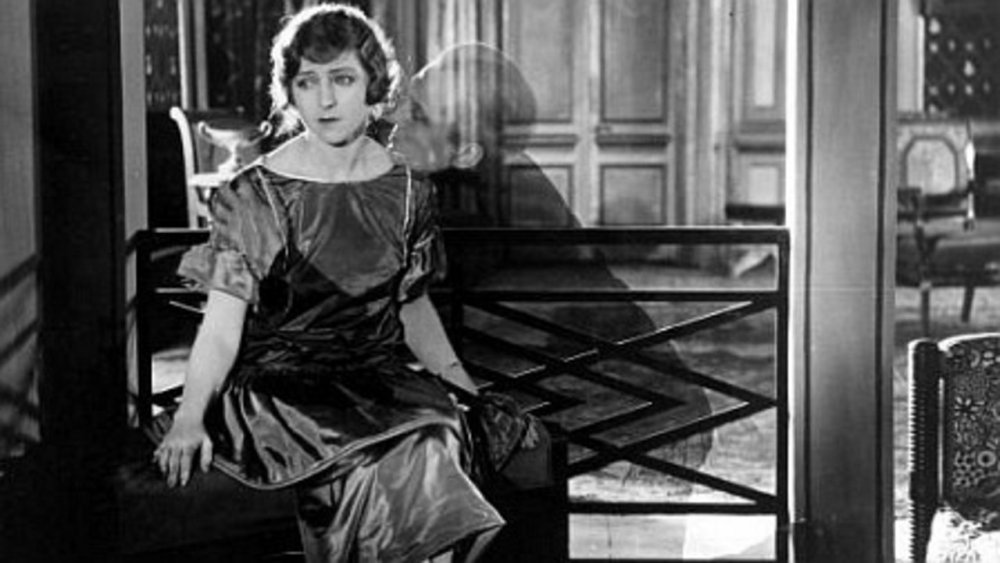
The Phantom of the Moulin-Rouge (Le fantôme du Moulin-Rouge, 1925)
For his part, René Clair had begun his directorial career with the Dada short Entr’acte (1924), originally screened as part of Francis Picabia and Erik Satie’s ballet Relâche, and the spirited science fiction prank Paris qui dort (1924). With The Phantom of the Moulin-Rouge (Le fantôme du Moulin-Rouge, 1925) and Le Voyage imaginaire (1926), Clair wanted to reconnect with the cinema of enchantments initiated by Méliès. For Clair, film was the medium of the magical and the marvellous, and this continued to inform his later works, including one of his best-known, I Married a Witch (1942), which he made in the United States, as well as Beauty and the Devil (La Beauté du diable, 1950) and Beauties of the Night (Les Belles de nuit, 1952), both filmed after his return to France following the end of war.
The surrealists, led by André Breton, played a crucial role in championing the fantastique, both in literature and in film, at a time when it was despised by mainstream critics. Because of their interest in dreams and the irrational, the surrealists enthusiastically embraced cinema. The new art of moving images held a particular attraction for them because it seemed so well-suited for exploring the world of the unconscious. Rather than specific narrative types or generic conventions, what they looked for was a sense of wonder and strangeness, anything that subverted solid realism or challenged the rational. For this reason, they were entranced by a wide variety of works, from German expressionist films such as The Cabinet of Dr. Caligari (1919) and Nosferatu (1922) to Hollywood fantasy dramas such as Berkeley Square (1933) and Peter Ibbetson (1935). In their own films, the surrealists equally sought to subvert the boundaries of the real, but their strategies and objectives differed from those of fantastique cinema. Rather than stealthy ambiguity, Luis Buñuel and Salvador Dalí deployed visual assault. Rather than hesitation, it was shock that Un chien andalou (1929) and L’Age d’or (1930) sought to provoke.
Surrealism and fantastique are two terms that have also been associated with Jean Cocteau. Although his films defy categorisation, it is undeniable that he occupies a central place in French fantastique cinema. In his first feature film, The Blood of a Poet (Le Sang d’un poète, 1930), he created a dream world that drew on the avant-garde experiments of the time, while with La Belle et la Bête (1946) he moved into the marvellous realm of the fairytale. The most deeply fantastique of all his films is perhaps Orphée (1950) because its supernatural elements are rooted in reality: updating the Greek myth, its story of a poet’s relationship with Death is set in a recognisably contemporary world. From The Blood of a Poet to Testament of Orpheus (Le Testament d’Orphée, 1960), Cocteau developed a brand of mythical fantastique that was entirely his own and which had a prodigious impact on the imaginations of later generations of filmmakers, both in France and abroad.
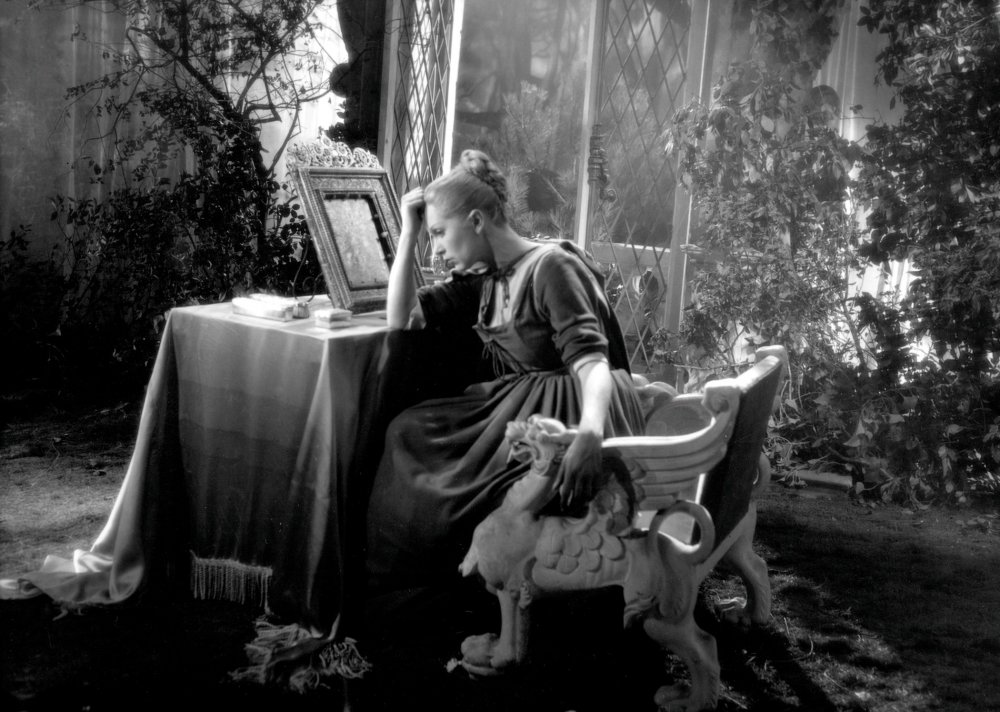
La Belle et la Bête (1946)
Cocteau’s contribution to fantastique cinema was not only as a director, but also as a scriptwriter. In that role, he played a significant role in France’s second fantastique peak, which occurred during World War II, as the country was occupied by the German army. In 1942 Cocteau penned the dialogue for Serge de Poligny’s The Phantom Baron (Le Baron fantôme) and played the part of the evanescent aristocrat of the title. The following year he wrote the script for L’Eternel retour (1943), a take on the story of Tristan and Isolde, directed by Jean Delannoy.
Other memorable works of the era were made by two directors who had found acclaim in the previous decades. Marcel L’Herbier played with the frontiers between dream and reality in the delightfully irreverent La Nuit fantastique (1942). With La Main du diable (1943), Maurice Tourneur delivered the disquieting tale of a diabolical pact based on a short story by 19th-century Romantic author Gérard de Nerval. Marcel Carné’s Les Visiteurs du soir (1942) also features the devil, this time plotting against true love. The period also saw the first French werewolf film, Guillaume Radot’s Le Loup des Malveneur (1942), while the industrious Christian-Jaque presented a tale of realism pervaded with mystery and superstition in Sortilèges (1945).
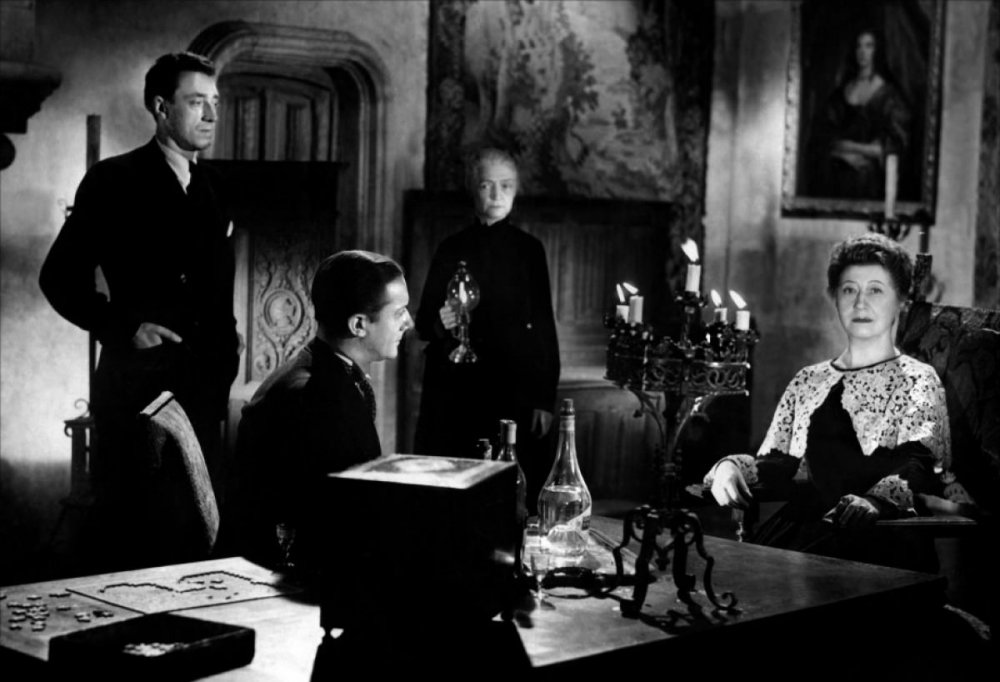
Le Loup des Malveneur (1942)
The popularity of the fantastique during the occupation has been attributed by some to a desire to escape the harsh realities of the time. Others have seen the plots of the films as allegories for the resistance against a malevolent enemy. Although these are undoubtedly valid considerations, they run the risk of underemphasising the thematic depth and narrative diversity of the films. While the fight between good and evil is certainly a recurrent concern of the period, it is depicted with too much nuance and ambivalence to be shoehorned into a single-layered interpretation. Beyond the representation of the immediate historical realities, the theme offers directors the opportunity for much wider, complex reflections on the human.
As for the perceived escapist nature of the films, it is perhaps more apt to see in their unsettled worlds a reflection of the fact that the reality of those years had taken an abrupt turn for the strange. Under the rule of an invading army, as certainties dissolved, heroes turned traitors, neighbours became potential enemies and alien values became the authoritarian norm, the familiar became foreign: life itself must have appeared fantastique.
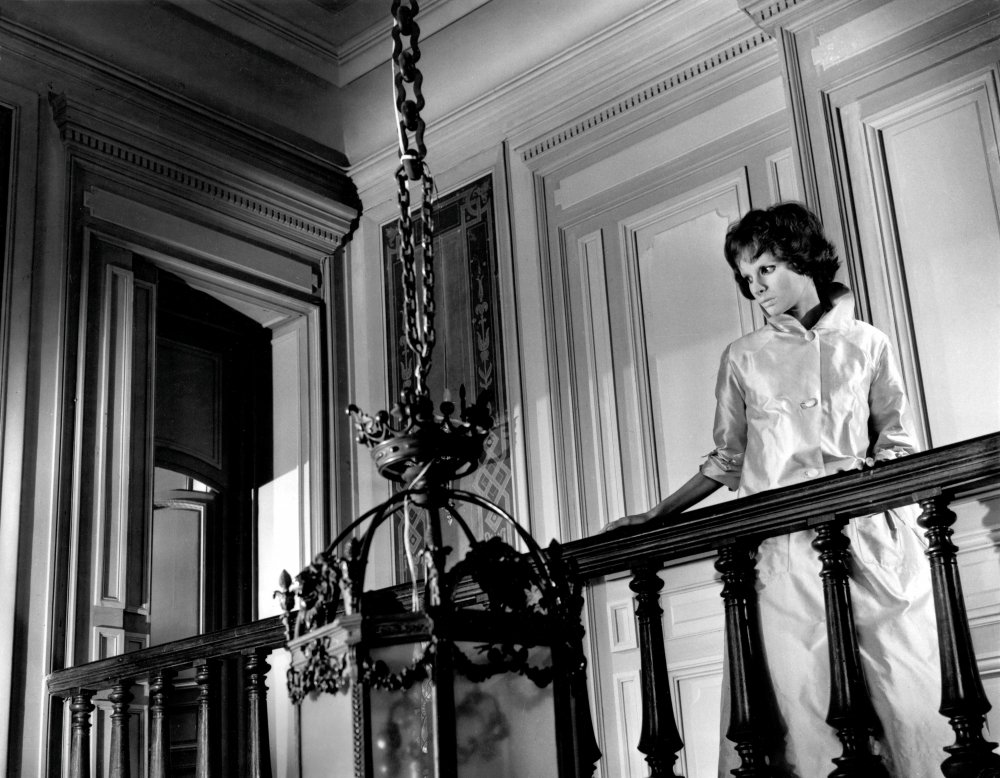
Eyes Without a Face (Les Yeux sans visage, 1960)
It was during another time of turmoil that the third fantastique wave soared. As the established order began to be violently questioned in the 1960s and 70s, weird, oneiric, hallucinatory worlds became once more popular on the big screen. In The Hands of Orlac (Les Mains d’Orlac, 1960), Edmond T. Gréville revisited a typical fantastique motif with the story of a pianist who believes he has been given the hands of a murderer after an accident. The same year, Georges Franju made one of the most startling works of poetic horror in French cinema, Eyes Without a Face (Les Yeux sans visage).
Roger Vadim also directed the first French vampire feature, Blood and Roses (Et mourir de plaisir, 1960), which opened the way for alluring tales of amorous undead as censorship began to relax. He was followed by Jean Rollin, one of the most prolific French fantastique directors, whose otherworldly reveries were peopled by nude bloodsuckers, starting with Le Viol du vampire (The Rape of the Vampire, 1968). Erotic phantasmatic visions also defined José Bénazéraf’s Frustration (aka The Chambermaid’s Dream, 1971) and Alain Robbe-Grillet’s Eden and After (L’Eden et après, 1970) as the fantastique continued to be inflected by sexual liberation.
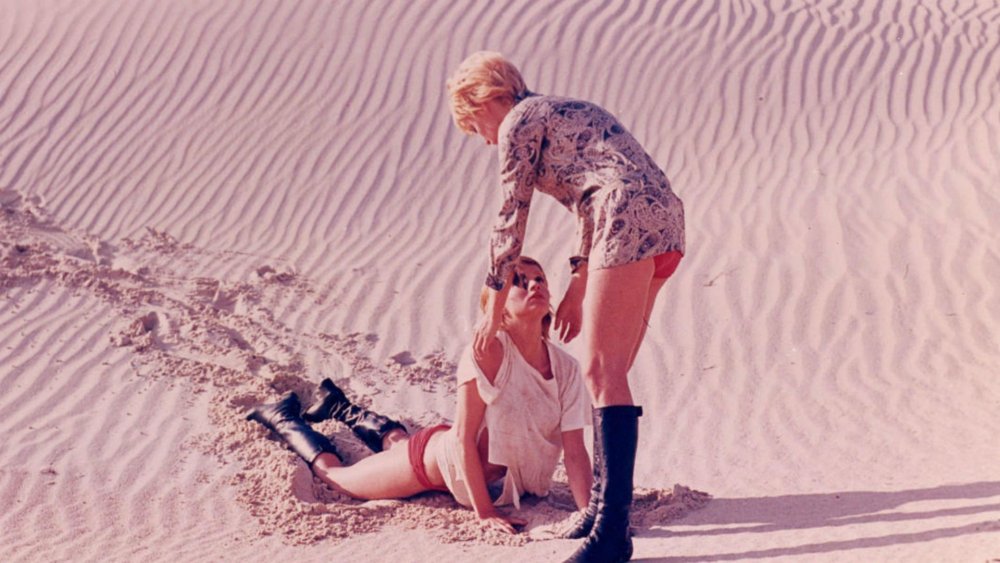
Eden and After (L’Eden et après, 1970)
The taste for the fantastique became particularly marked after the revolutionary events of May 1968. The films of Rollin and Bénazéraf, as well as Alain Jessua’s chilling Shock Treatment (Traitement de choc, 1973) and Christian de Chalonge’s obliquely unsettling The Wedding Ring (L’Alliance, 1970), resonated with the countercultural questioning of political hierarchies and social conventions. A dynamic alternative community began to form around independent publisher Eric Losfeld, who not only produced books on fantastique and surrealist cinema, but also began printing Midi-minuit fantastique, one of the first magazines to champion this kind of film, in 1962.
The same year, Losfeld also published Jean-Claude Forest’s sensually subversive graphic novel Barbarella, which would become a deliriously titillating science fiction blockbuster six years later, directed by Vadim and with Jane Fonda in the leading role. There was a strong connection between fantastique film and underground comics in that period; the psychedelic posters of Jean Rollin’s early films, for instance, were designed by Philippe Druillet, who would go on to co-found the rule-breaking magazine Métal hurlant in 1974.
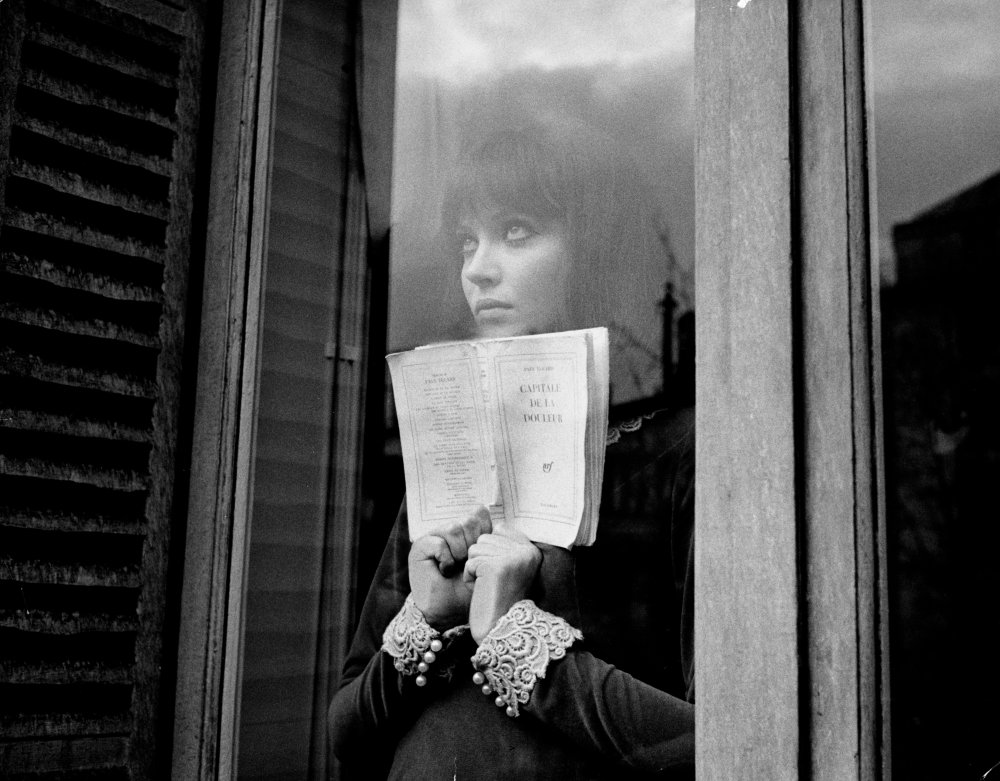
Alphaville (1965)
Even the nouvelle vague directors, who had been so dismissive of the fantastique, found themselves influenced by it, with mixed results. At the top of the list, Jean-Luc Godard innovatively combined film noir and science fiction in Alphaville (1965), while Claude Chabrol offered a genuinely offkilter modern take on Alice in Wonderland in Alice or The Last Escapade (Alice ou la dernière fugue, 1977).
Not quite as inventive, François Truffaut’s Fahrenheit 451 (1966) was a solid adaptation of Ray Bradbury’s classic. Like Chabrol, Louis Malle was inspired by Lewis Carroll’s tale, but his tiresome Black Moon (1975) fails to create any real sense of outlandishness, something that could also be said of Jacques Rivette’s Duelle (1976). The period was also marked by a penchant for cerebral, understated science fiction, literally so in Jacques Doniol-Valcroze’s Man with the Transplanted Brain (L’homme au cerveau greffé, 1972), while Alain Resnais used a time-travelling premise to examine a failed relationship in Je t’aime, je t’aime (1968).
Those years also saw a fantastique surge in Belgium, notably in the work of André Delvaux and Harry Kümel. While it is sometimes difficult to identify the nationality of films, in Belgium the problem is compounded by the existence of two distinct linguistic and cultural communities within the country. In Un soir, un train (1968), Delvaux introduced elements of the fantastique, a mode that is inherently about the transgression of boundaries, within a story set against the realistic background of the Flemish-Walloon divide, thereby probing frontiers of all kinds. Similarly, Kümel challenged rigidly defined community identities with the internationally cast, multi-version, French-Belgian co-production Malpertuis (1971), adapted from the novel by the influential Belgian author Jean Ray, who despite being Flemish, chose to write in French.
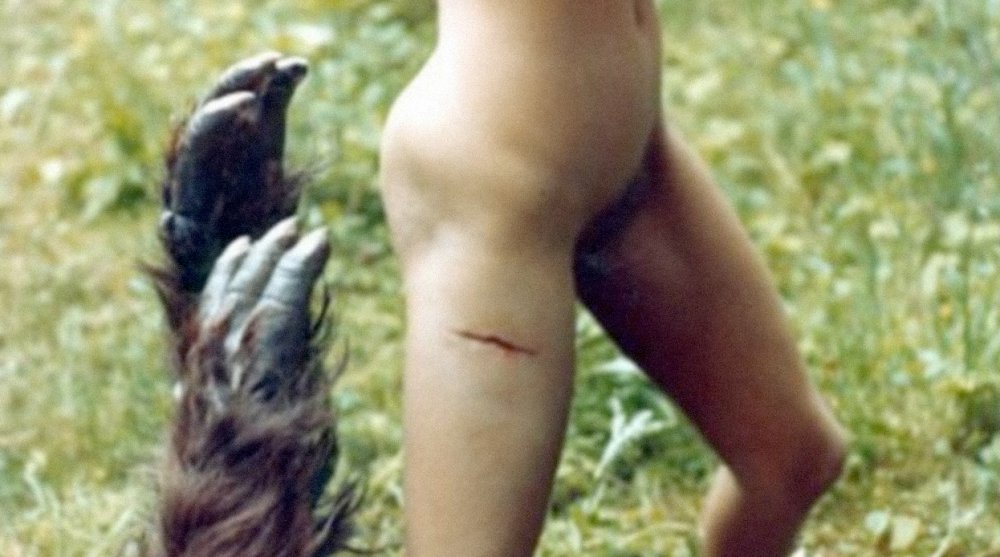
The Beast (La Bête, 1975)
Other great fantastique films of the time have an equally blurred position with regards to national borders: The Tenant (1976) was a French production directed by exiled Polish filmmaker Roman Polanski from a novel by French writer Roland Topor, while Walerian Borowczyk’s The Beast (1975) was also made in France and Andrzej Zulawski’s Possession (1981) was a French-German co-production.
The following two decades saw a decline in the popularity of fantastique cinema, despite fascinating oddities such as Luc Besson’s postapocalyptic debut The Last Battle (Le Dernier Combat, 1983) or the international success of Marc Caro and Jean-Pierre Jeunet’s Delicatessen (1990). However, amid the unfamiliar anxieties emerging at the dawn of the new millennium, the French fantastique rose up once more, manifesting itself in a number of prominent films including Marina de Van’s In My Skin (Dans ma peau, 2002), Alexandre Bustillo and Julien Maury’s Inside (À l’intérieur, 2007), Pascal Laugier’s Martyrs (2008), Lucile Hadzihalilovic’s Evolution (2015) and Julia Ducournau’s Raw (2016).
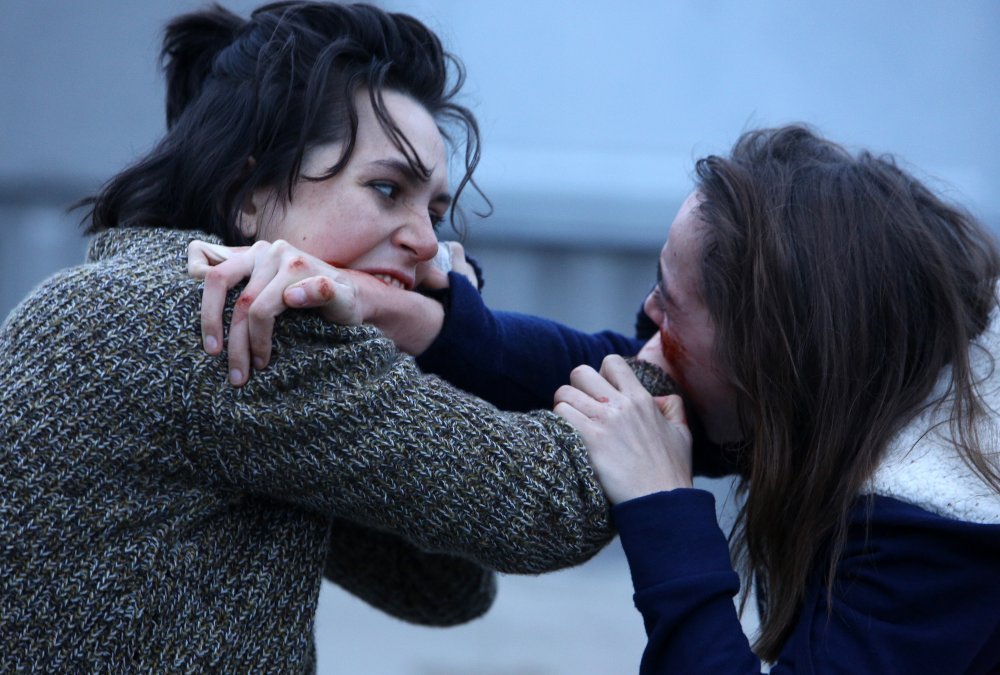
Raw (2016)
As these examples show, the current wave is marked by a strong female presence, with women directors delivering some of its most outstanding works. The mood of the millennial fantastique is generally less dreamy and more brutal, less poetic and more horrific, than in earlier periods, partly due to the influence of American cinema on a new generation of filmmakers, partly echoing the ambient dystopia: imbued with a greater sense of hopelessness in the human, these films are less likely to be relieved by glimmers of beauty, fervour or ecstasy than their predecessors.
Shaped by surrealism and counter-culture, German expressionism and American horror, Romantic literature and English gothic, French fantastique cinema is a unique witches’ brew of influences. Heady, rich and volatile, it has been adaptable enough to offer the kind of potent concoctions needed at the most troubled and turbulent times in the country’s history. Now, despite continuing critical scorn and the lack of financial support, the strong, fiery, intoxicating fare it provides is precisely what is keeping contemporary French cinema vitally modern and internationally relevant.
The 12 films in our Deep Focus season at BFI Southbank
1. Paris qui dort & Le Voyage imaginaire
René Clair, 1924 & 1926
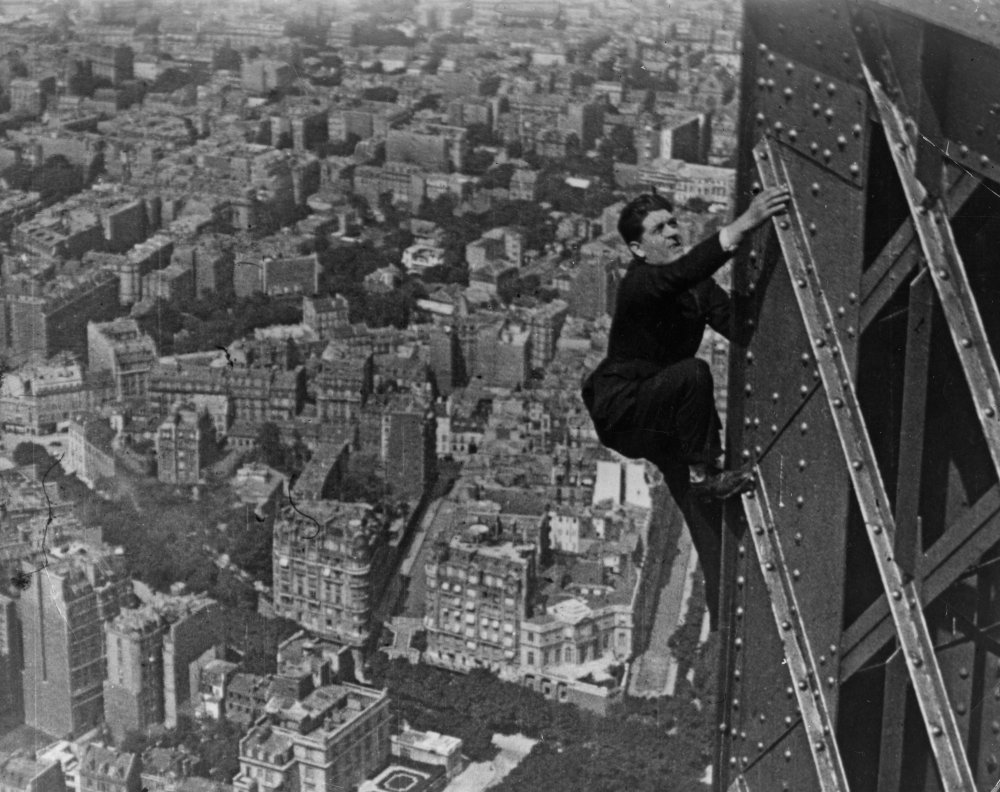
One of the first fantastique directors in French cinema, René Clair was also one of the few who consistently worked in that mode throughout his career. His early films mix burlesque and fantasy in tales whose exuberant playfulness has a gently anarchic edge.
In Paris qui dort, a scientist invents a ray that puts the city to sleep, apart from a motley group who escape its effects. In Le Voyage imaginaire, a dreaming bank clerk is transported to the fairy world. In both films, the enchantments of the supernatural are combined with the real wonders of the city, the Eiffel Tower and Notre-Dame respectively. Le Voyage imaginaire also features a chilling early example of waxworks terror set in the Musée Grévin.
2. The Fall of the House of Usher
(La Chute de la maison Usher) Jean Epstein, 1928
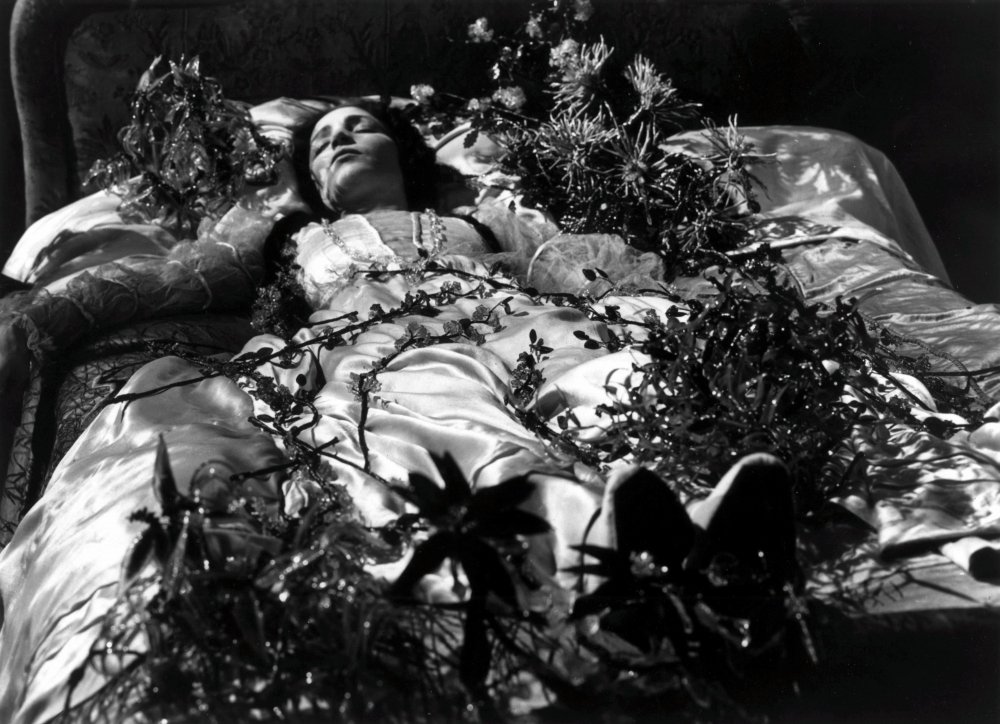
The Fall of the House of Usher (La chute de la maison Usher, 1928)
A leading figure of the avant garde, Jean Epstein adapted Edgar Allan Poe’s story (combining it with the latter’s later tale The Oval Portrait) for his own company, just before the advent of the talkies. Generally considered to be Epstein’s masterpiece, the film mixes gothic motifs with expressionist sets and elaborate visual effects to create a mental landscape of feverish obsession. The morbid beauty of the decaying manor, Roderick Usher’s frightful passion and his wife’s startling resurrection are heightened by luminous cinematography and deliberate artifice. A year before he made Un chien andalou, Luis Buñuel was Epstein’s assistant on the film.
3. Les Visiteurs du soir
Marcel Carné, 1942
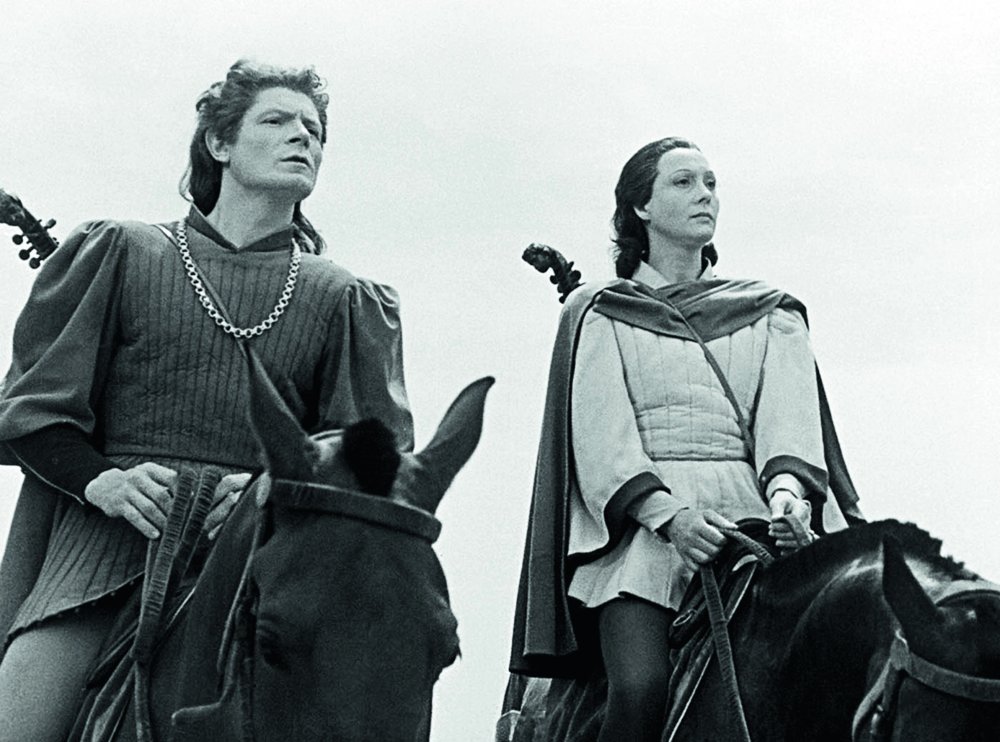
Marcel Carné, known for the much-loved Les Enfants du paradis (1945) and the now classic ‘poetic realism’ films he directed in the 1930s, made an incursion into the fantastique during World War II, as France was occupied by the German army. With his regular collaborator, poet Jacques Prévert, he crafted a medieval tale of two troubadours who come to a castle as the baron’s daughter is about to be married. Sent by the devil to disrupt the festivities, they face an unexpected obstacle: a pure heart. Lyrical and humorous, the film is an ode to the power of love and the possibility of resistance, as well as a celebration of the magic of cinema. The glorious Arletty stars as a troublingly androgynous seducer.
4. La Nuit fantastique
Marcel L’Herbier, 1942
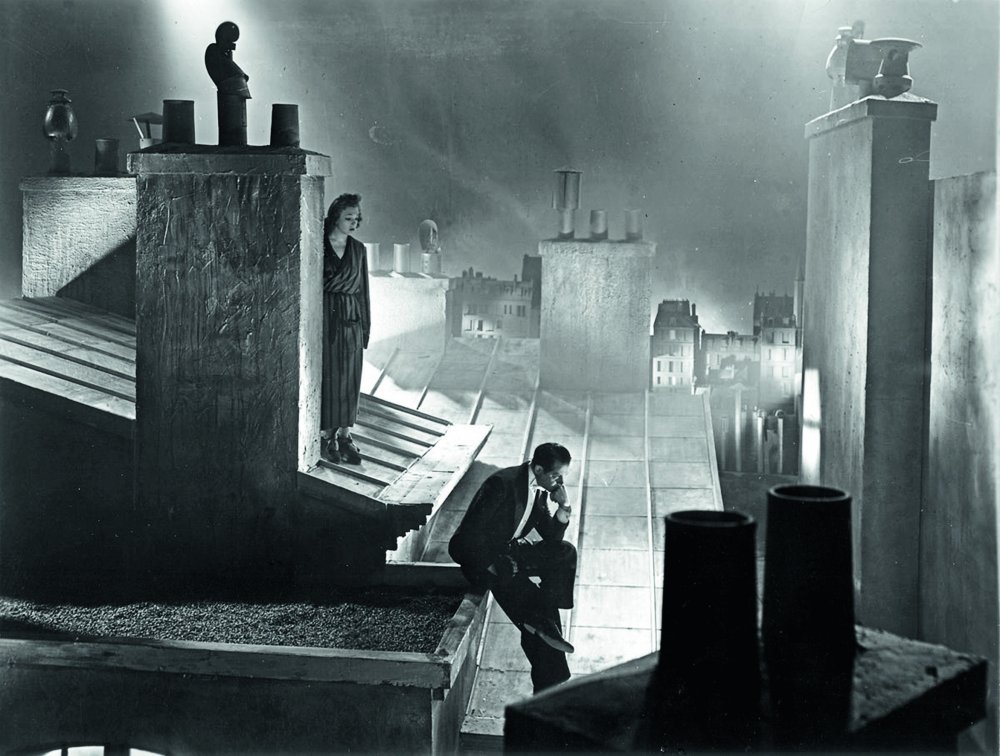
Technical virtuoso Marcel L’Herbier was a veteran filmmaker when he made La Nuit fantastique, having established his artistic credentials in the 1920s with L’Inhumaine, noted for its splendid geometrical design. Two decades later, in the difficult conditions of the occupation, L’Herbier wanted to make a fairytale rooted in realism.
La Nuit fantastique follows the adventures of a poor philosophy student, who, while thinking he is sleeping, meets the girl of his dreams and must confront magicians, mummies and assorted miscreants in order to win her over. In this enchanting film where nothing is quite what it seems, fantasy and reality blur in a gleefully befuddling manner. Sassy, witty and subtly subversive, L’Herbier’s charmer is truly inhabited by the spirit of the marvellous.
5. La Main du diable
Maurice Tourneur, 1943
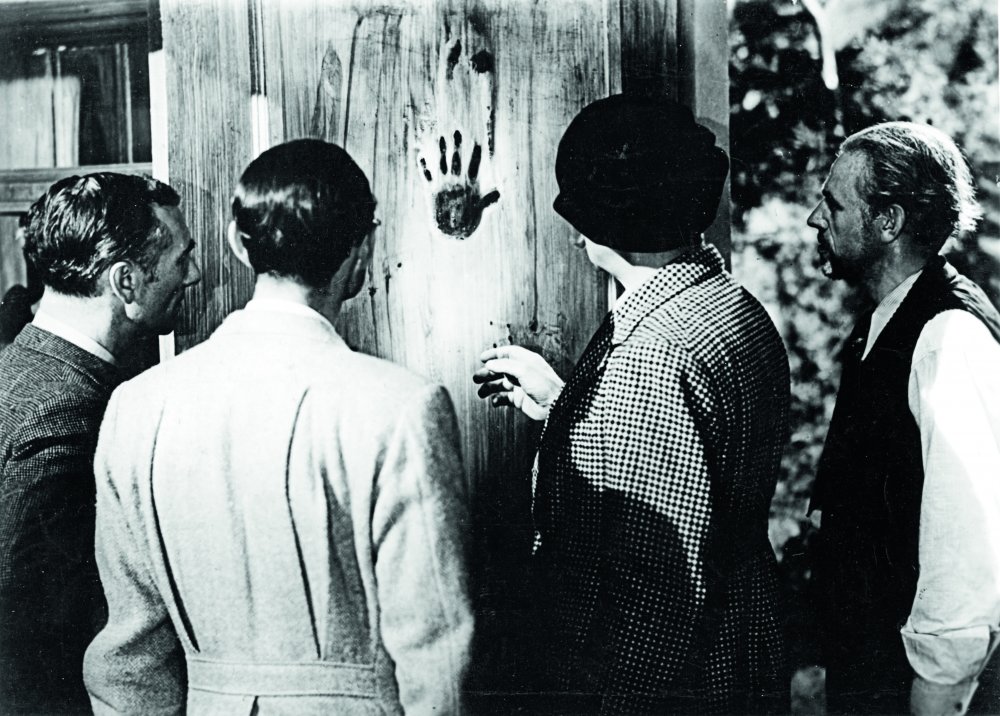
Maurice Tourneur directed La Main du diable in France in his mid-sixties, around the same time that his son Jacques’s influential Hollywood film Cat People was released. Loosely adapted from Gérard de Nerval’s fantastique short story La Main enchantée (1832), Tourneur senior’s take on the Faustian pact with the devil resonates with the contemporary context of the occupation and the collaborationist Vichy government. The great Pierre Fresnay plays a failed painter who buys a talisman that gives him fame and fortune, but carries a heavy price. The opening mountain scenes, the tormented paintings, the deceptively insignificant devil, the grim talisman and a sinister masked gathering all make for a compelling tale of dreadful strangeness.
6. The Phantom Baron
(Le Baron fantôme) Serge de Poligny, 1943
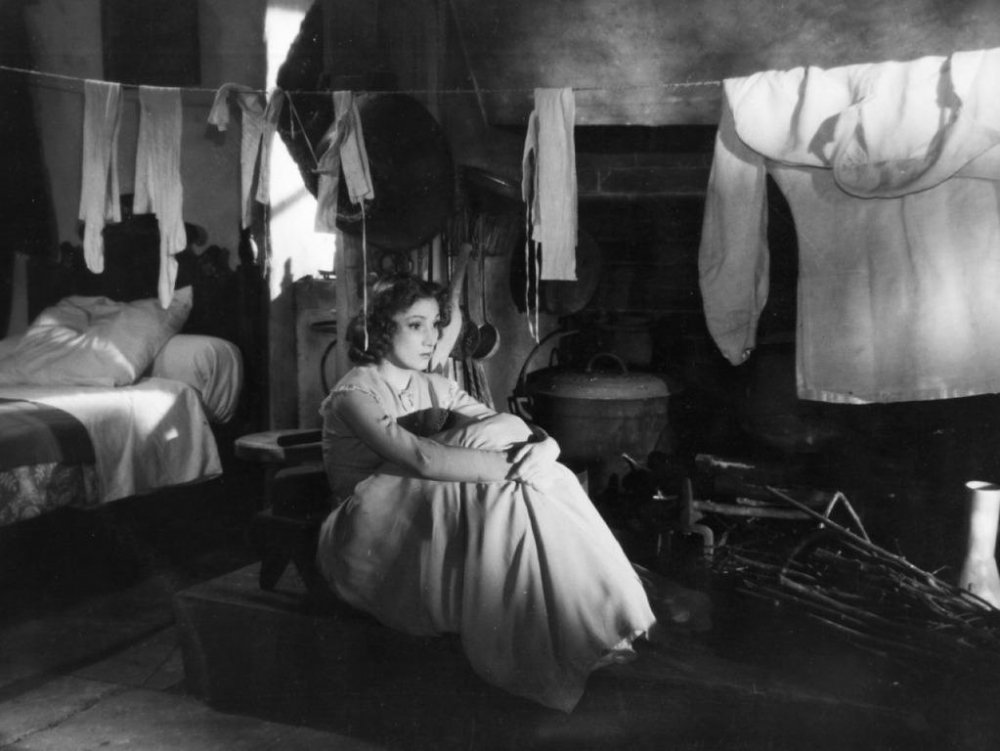
With a script by Jean Cocteau, costumes by Christian Dior, and a lovely performance from Jany Holt, The Phantom Baron is a pure whimsical delight. Set in a castle that appears to be haunted by the baron of the title (played by Cocteau), it is a tale of mysteries and revelations, sleepwalking and awakenings, false identity and true nobility. Evocatively shot, the film features the castle, mist and ghosts typical of the gothic, as well as its perceptual instability. An ethereal scene of night-time ravishment recalls The Cabinet of Dr. Caligari, but de Poligny’s film is more fairytale than creepy nightmare, and out of the maze of secret passages and deceitful plots true love can finally emerge.
7. Blood and Roses
(Et mourir de plaisir) Roger Vadim, 1960
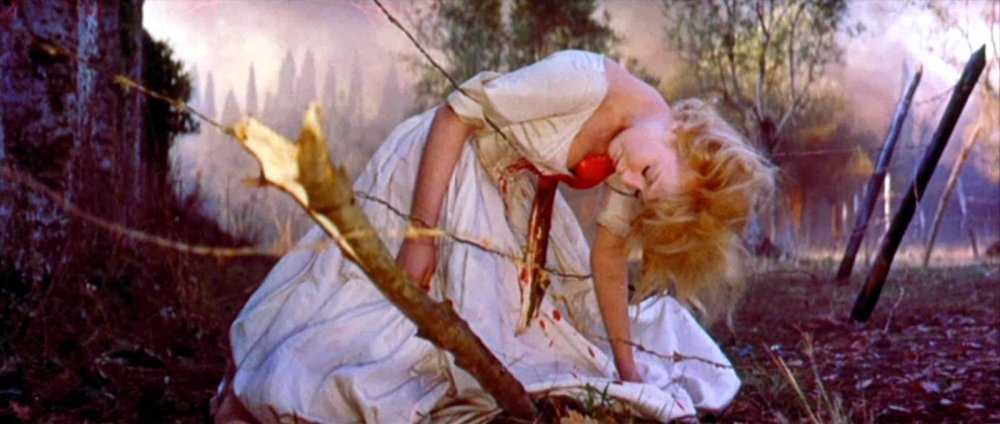
The first French vampire feature is a modern take on Sheridan Le Fanu’s story Carmilla (1871), which would become a popular source for racy horror cinema in the 1970s. Set in a magnificent country mansion, it reconfigures the story as a love triangle between Carmilla Karnstein, her cousin and his fiancée, intensified by the vampiric legend that surrounds the Karnstein family. The splendid location, lavish interiors and luxuriant colours create an atmosphere of suffocating sensuality in which erotic tension builds up between all three characters, complicating the lesbian undertones of the original tale. Treading a careful line between medical explanations and supernatural ones, the film remains seductively ambiguous to the end.
8. Eyes Without a Face
(Les Yeux sans visage) Georges Franju, 1960
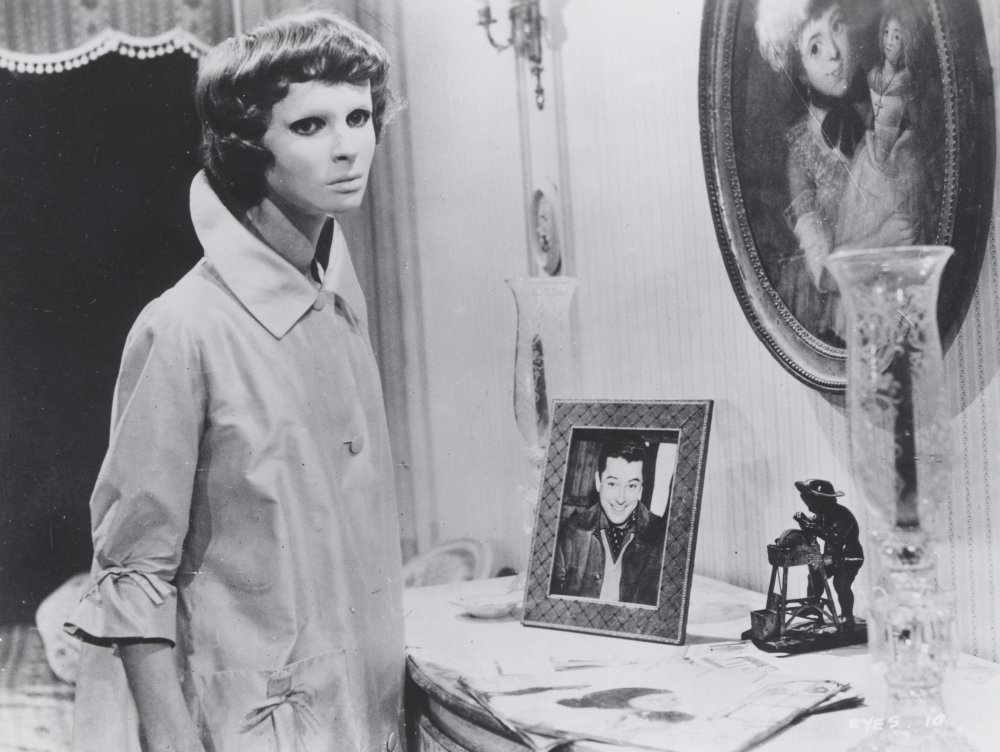
A masterpiece of macabre poetry situated at the confluence of horror, science fiction and fairytales, Georges Franju’s most cherished work focuses on a pioneering surgeon attempting to give his daughter a face transplant to restore her disfigured features. The eerie silhouette of the masked Edith Scob wandering through dark corridors, her ogre-like father, the haunting barks of the captive dogs, the merry-go-round music by Maurice Jarre, the night-time transgressions and the gruesome surgery create a richly ambivalent tale that blurs the line between beauty and monstrosity, love and tyranny, the rational and the irrational. Brutal and lyrical in equal part, it is one of the most memorable entries in French fantastique cinema.
► Watch Eyes Without a Face on BFI Player
9. The Wedding Ring
(L’Alliance) Christian de Chalonge, 1970
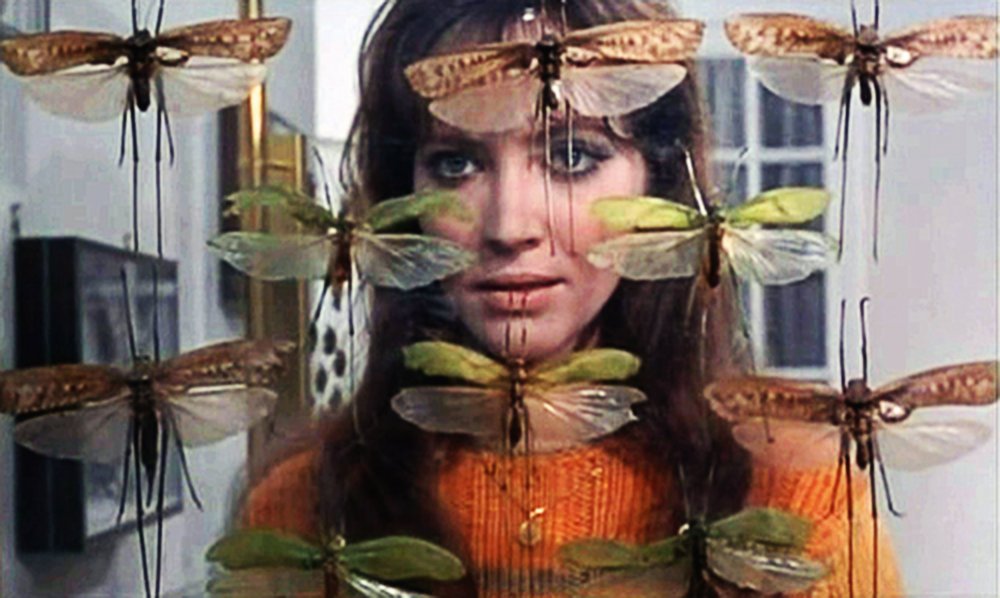
This little-known gem was adapted from his own novel by Jean-Claude Carrière (Luis Buñuel’s regular collaborator in the later part of his career), who also plays the lead opposite the radiantly inscrutable Anna Karina. After they get married, he becomes increasingly suspicious of her, while she is troubled by the growing collection of exotic animals he keeps at home. An elusive story of marital paranoia, the film builds up a pervasively unnerving atmosphere born of quotidian foreignness, and lets it simmer ominously until the unexpected, cryptic denouement.
10. Malpertuis
Harry Kümel, Belgium/France, 1971
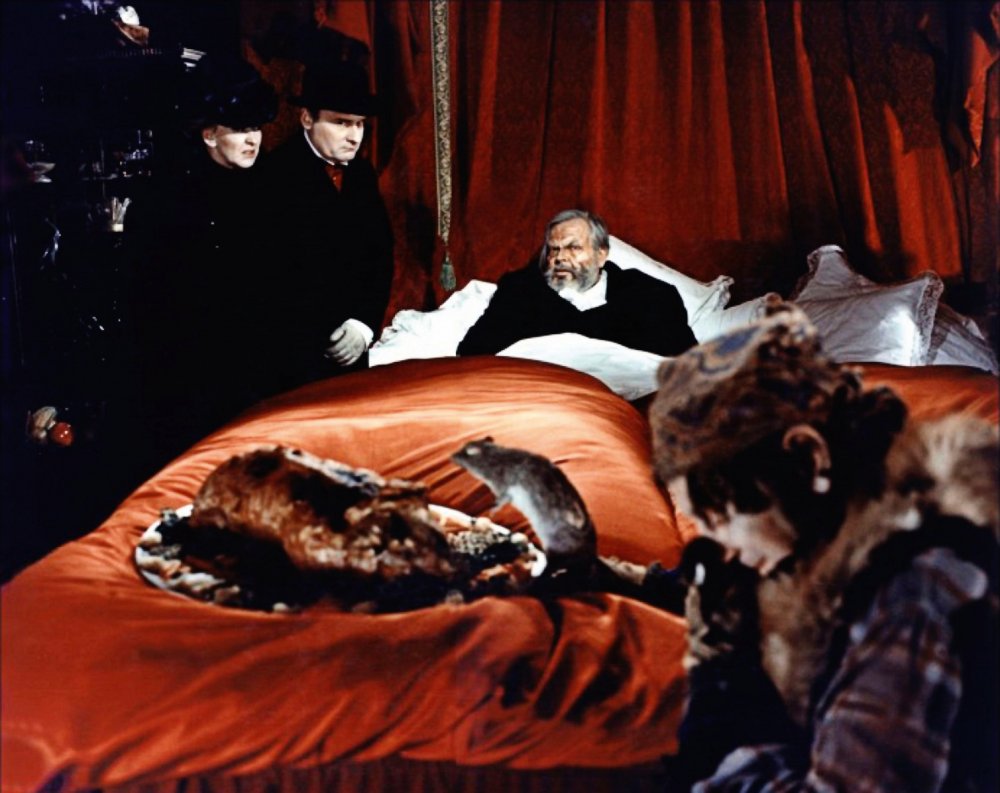
Financing problems forced Harry Kümel to make Les Lèvres rouges (Daughters of Darkness, 1971), a wintry, languorous vampire tale that made his reputation, before he could turn to the project that was close to his heart: an adaptation of Jean Ray’s novel Malpertuis. The influence of Jean Cocteau is evident in this labyrinthine mythological fantasy. As his despotic uncle Cassavius (Orson Welles) lies on his deathbed, a young sailor goes back to the mansion of his childhood and gradually uncovers the secrets it hides. Oppressively opulent, flamboyantly baroque, the film, like the mansion itself, is a beguilingly disorientating world in which to get endlessly lost.
11. The Iron Rose
(La Rose de fer) Jean Rollin, 1973
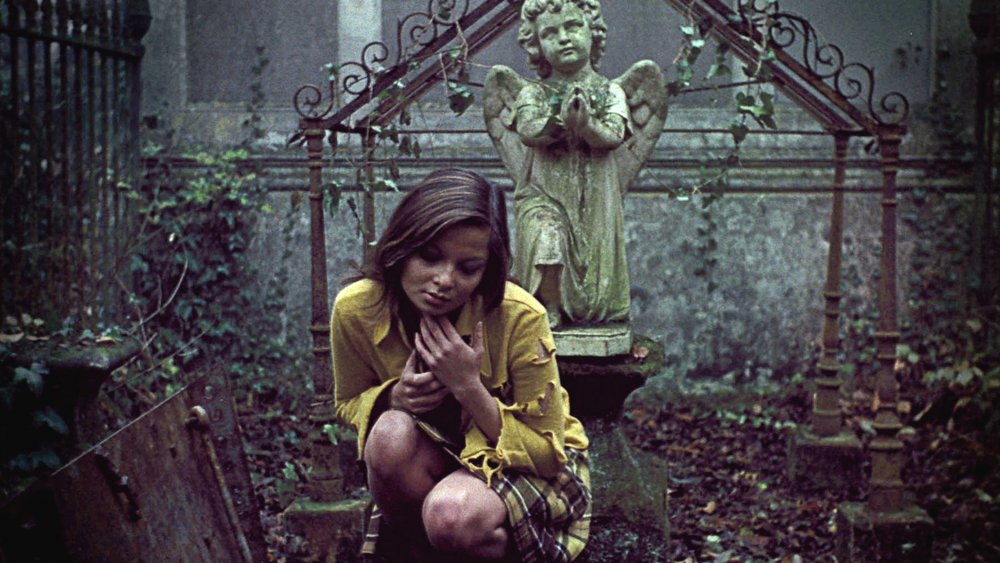
Misunderstood and derided by French critics during most of his career, Jean Rollin was one of the true heirs of the surrealists and his brand of fantastique bears the marks of that formative influence. Shot in the magnificent Amiens cemetery, La Rose de fer is one of his most personal and poetic works. Two lovers go for a picnic in a graveyard, but when the evening comes they cannot find the gate to leave. A dream-like nocturnal wander through tombstones in search of the lost door, it is an initiatory journey to love and death, and a paean to a sensuous, vibrant other-world of the imagination that is presented as infinitely more enticing than the drab reality of modernity.
► Watch The Iron Rose on BFI Player
12. Innocence
Lucile Hadzihalilovic, 2004
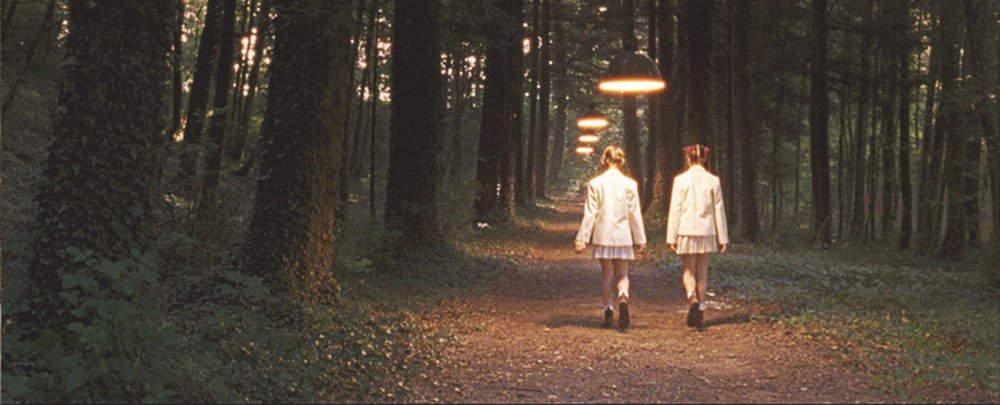
Based on a 19th-century story by Frank Wedekind, Lucile Hadzihalilovic’s feature debut is a dreamy gothic fairytale set in an isolated all-girl boarding school deep in the woods. As a new pupil arrives, she is inducted into the strange ways of her new abode. Underground tunnels, weighted silence, enigmatic teachers, odd rituals, carefree games and heavenly surroundings create an atmosphere that is at once idyllic and disquieting, safe and menacing. Elegantly weaving visual and aural impressions, Innocence offers an overwhelming sensory immersion into the bewildering process of adolescent transformation.
-
Sight & Sound: the November 2018 issue

Steve McQueen brings Widows into the now; plus Mandy, The Other Side of the Wind, Shirkers and the French fantastique.
-
The Digital Edition and Archive quick link
Log in here to your digital edition and archive subscription, take a look at the packages on offer and buy a subscription.




